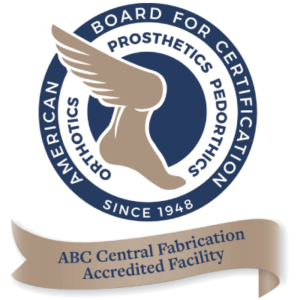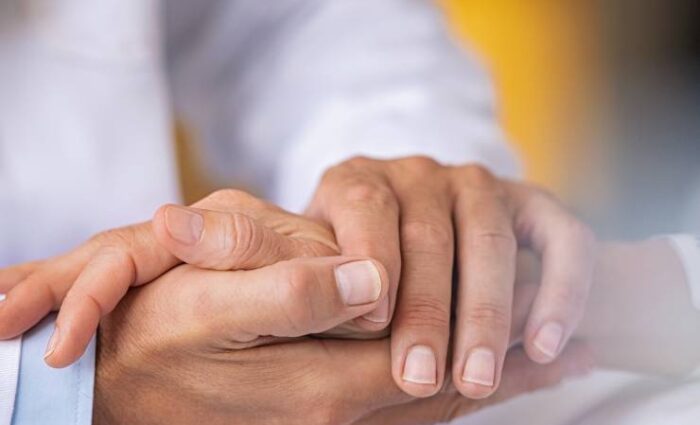The Role of Collaboration Between Prosthetists and Physicians in Patient Care
In the world of prosthetics, achieving optimal patient outcomes requires a collaborative approach between prosthetists and physicians. At Grace Prosthetic Fabrication, we understand that combining the expertise of both medical professionals ensures that patients receive personalized care, helping them regain mobility and independence. This partnership is key to designing, fitting, and fine-tuning prosthetics that suit each patient’s specific needs.
In this blog post, we will explore how this collaboration works, the benefits it brings to patient care, and how prosthetic technology is revolutionizing outcomes for those who rely on prosthetic fabrication.
1. The Role of Prosthetists in Patient Care
Prosthetists play an essential role in creating and fitting prosthetic limbs. Their expertise in prosthetic fabrication allows them to design devices that provide both comfort and functionality. By carefully assessing the patient’s residual limb, mobility needs, and lifestyle, prosthetists are able to create a custom prosthetic that enhances the individual’s quality of life.
- Initial Evaluation: Prosthetists work closely with the patient from the beginning to assess the fit, comfort, and functionality of the prosthetic. This initial stage is crucial for ensuring that the device meets the patient’s expectations.
- Fabrication and Fitting: Once the design is determined, prosthetic fabrication begins, using advanced materials and technology to ensure durability and comfort. Afterward, the prosthetist fine-tunes the fit of the prosthetic, making any necessary adjustments to ensure proper alignment and support.
- Ongoing Care: As the patient adjusts to their new prosthetic, regular follow-up visits with the prosthetist ensure that the device remains comfortable and functional, addressing any concerns that arise.
2. The Role of Physicians in Prosthetic Care
While prosthetists are experts in creating and fitting prosthetic devices, physicians play a critical role in overseeing the patient’s overall health and ensuring that the prosthetic is safe and effective. Physicians are often the first to assess the patient’s suitability for a prosthetic, considering factors such as the individual’s physical health, healing process, and ability to use the device.
- Medical Assessment: Before fitting a prosthetic, physicians evaluate the patient’s physical condition, including factors like circulation, muscle strength, and healing of the residual limb. This ensures that the patient is physically ready for a prosthetic.
- Collaboration with Prosthetists: Physicians collaborate closely with prosthetists to ensure the device will meet the patient’s medical needs. For example, patients with diabetes or vascular issues may require specialized prosthetics that account for skin sensitivity or circulation problems.
- Rehabilitation Guidance: Physicians are also instrumental in developing a rehabilitation plan that helps patients adjust to life with a prosthetic, ensuring that the device is integrated into the patient’s daily activities.
3. How Collaboration Improves Patient Outcomes
The collaboration between prosthetists and physicians leads to better patient outcomes, as the expertise of both professionals ensures that all aspects of the patient’s care are considered. Here are some of the key benefits of this collaborative approach:
- Personalized Care: By combining their knowledge, prosthetists and physicians can create a highly personalized care plan that addresses both the medical and functional needs of the patient. This level of customization leads to better comfort, mobility, and satisfaction with the prosthetic device.
- Holistic Treatment: Physicians provide crucial medical insights into the patient’s health, while prosthetists focus on the functionality and fit of the prosthetic. This holistic approach ensures that the prosthetic is designed not just for movement but also for the patient’s overall well-being.
- Ongoing Monitoring: Collaboration doesn’t end once the prosthetic is fitted. Both the prosthetist and the physician monitor the patient’s progress over time, making adjustments to the device as needed and addressing any medical issues that arise.
4. The Impact of Prosthetic Technology on Collaboration
Advancements in prosthetic technology have revolutionized the way prosthetists and physicians collaborate. Today, new materials, sensors, and AI-driven devices allow for more precise adjustments and better patient outcomes. This technology enables prosthetists to create more functional and responsive devices, while physicians can monitor their patients’ health and progress more effectively.
- Myoelectric Prosthetics: With the integration of prosthetic technology like myoelectric sensors, prosthetic limbs can respond to muscle signals, offering patients greater control and functionality. The prosthetist’s expertise in fitting and adjusting these high-tech devices ensures that the patient benefits from enhanced movement.
- Data-Driven Insights: Modern prosthetics often come with sensors that collect data on the patient’s movements. This data is invaluable for medical professionals, as it allows them to track how well the prosthetic is functioning and make informed decisions about adjustments or further rehabilitation.
- Advanced Materials: New materials such as carbon fiber and lightweight polymers are being used in prosthetic fabrication. These materials offer strength and flexibility, allowing prosthetists to design limbs that are both durable and easy to wear, improving patient satisfaction.
5. Grace Prosthetic Fabrication: A Partner in Patient Care
At Grace Prosthetic Fabrication, we understand the importance of collaboration between medical professionals. Our team works closely with both prosthetists and physicians to ensure that each prosthetic device is designed with the patient’s specific needs in mind. Whether it’s a simple prosthetic limb or a high-tech, myoelectric device, we are committed to providing personalized solutions that improve the quality of life for each patient.
- Custom Prosthetics: Every patient is unique, and so is their prosthetic. Our custom-made devices are crafted using state-of-the-art materials and techniques to provide the best possible fit and functionality.
- Ongoing Support: We believe in long-term patient care. That’s why we continue to work with prosthetists and physicians after the initial fitting, ensuring that any adjustments are made to improve comfort and mobility.
Contact Grace Prosthetic Fabrication for Custom Prosthetic Fabrication
The collaboration between prosthetists and physicians is essential for ensuring the best outcomes in prosthetic care. By combining their expertise, these medical professionals provide patients with a holistic approach to mobility and rehabilitation. With advancements in prosthetic technology and the support of experienced professionals like those at Grace Prosthetic Fabrication, patients can enjoy greater independence, comfort, and improved quality of life.
For more information on how Grace Prosthetic Fabrication can support your collaboration with healthcare professionals, contact us today to learn more about our services.






